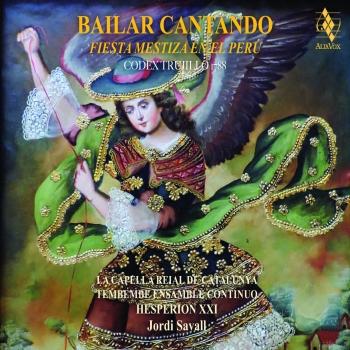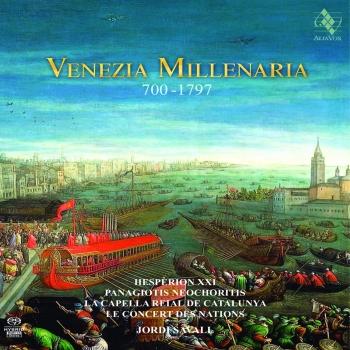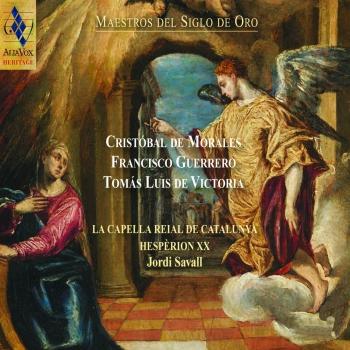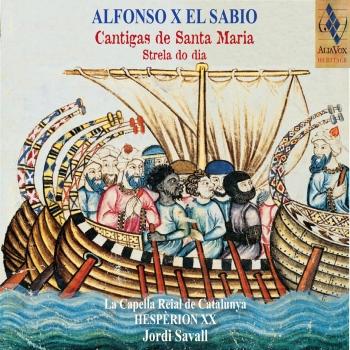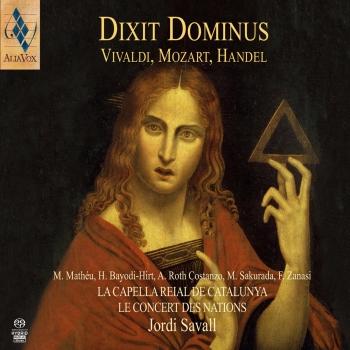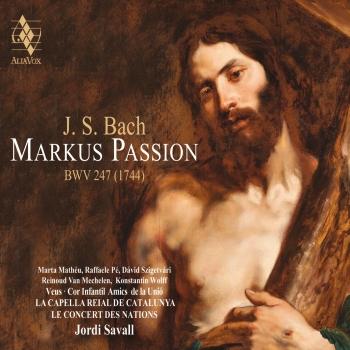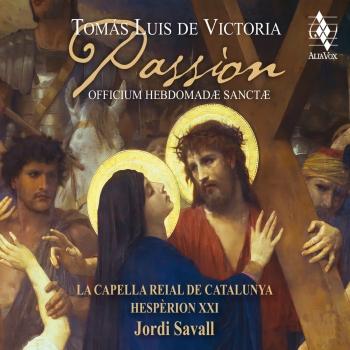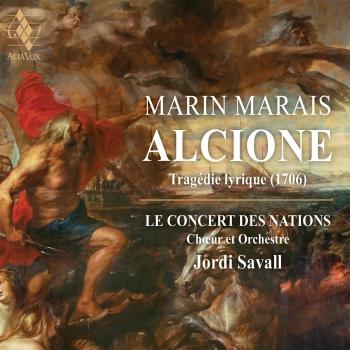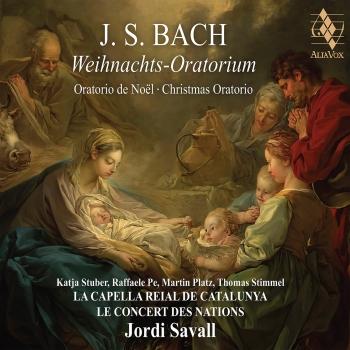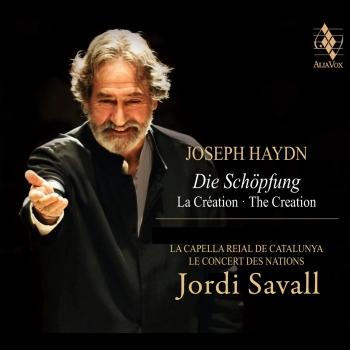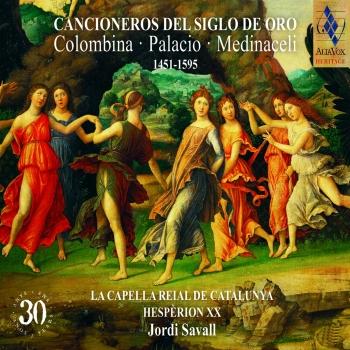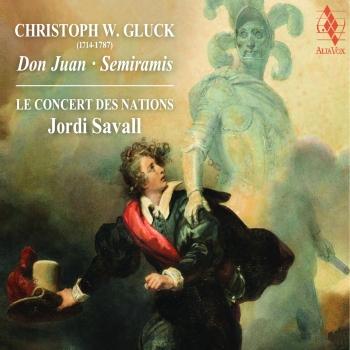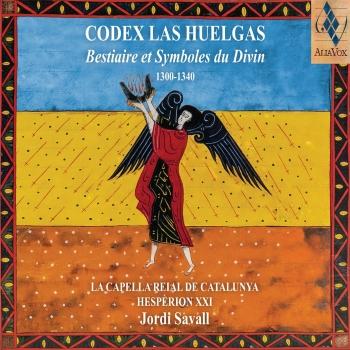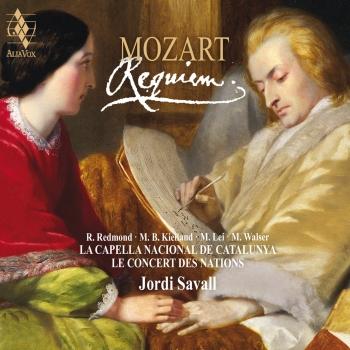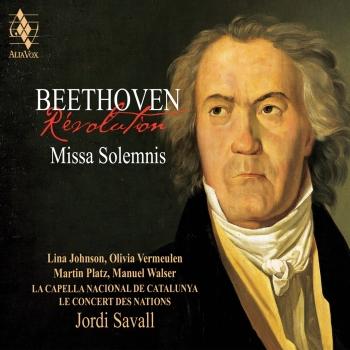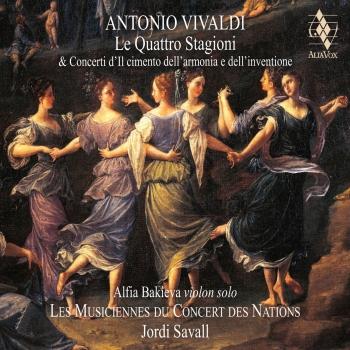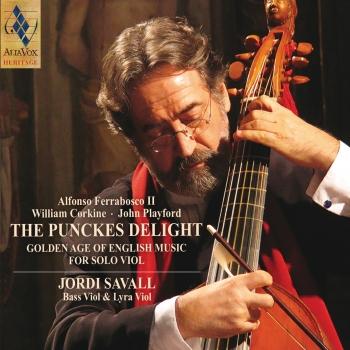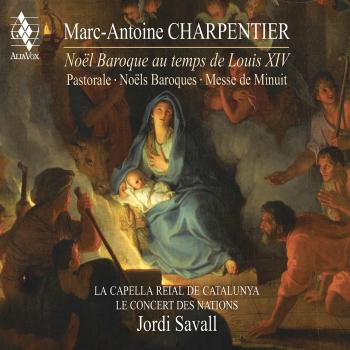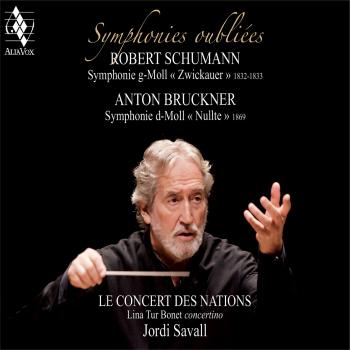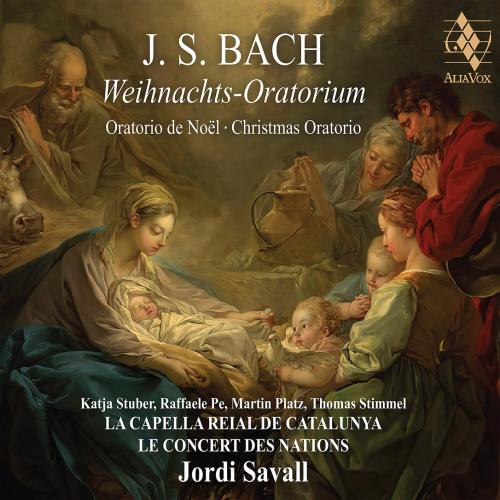
J. S. Bach: Weihnachts-Oratorium Jordi Savall
Album info
Album-Release:
2020
HRA-Release:
03.12.2021
Label: Alia Vox
Genre: Classical
Subgenre: Vocal
Artist: Jordi Savall
Composer: Johann Sebastian Bach (1685-1750)
Album including Album cover
- Johann Sebastian Bach (1685 - 1750):
- 1 Bach: I. TEIL - Jauchzet, frohlocket, auf, preiset die Tage - 1. Chor 08:02
- 2 Bach: Evangelist: Es begab sich aber zu der Zeit 01:17
- 3 Bach: Rezitativ (Alt): Nun wird mein liebster Braütigam 00:58
- 4 Bach: Arie (Alt): Bereite dich, Zion, mit zärtlichen Trieben 05:10
- 5 Bach: Choral: Wie soll ich dich empfangen? 01:19
- 6 Bach: Evangelist: Und sie gebar ihren ersten Sohn 00:21
- 7 Bach: Choral (Sopran), Rezitativ (Bass): Er ist auf Erden kommen arm 02:38
- 8 Bach: Arie (Bass): Großer Herr, o starker König 04:49
- 9 Bach: Choral: Ach mein herzliebes Jesulein 01:14
- 10 Bach: II. TEIL - Und es waren Hirten in derselben Gegend - 10. Sinfonia 05:24
- 11 Bach: Evangelist: Und es waren Hirten in derselben 00:38
- 12 Bach: Choral: Brich an, o schönes Morgenlicht 01:07
- 13 Bach: Evangelist: Der Engel Und der Engel sprach zu ihnen 00:48
- 14 Bach: Rezitativ (Bass): Was Gott dem Abraham verheissen 00:38
- 15 Bach: Arie (Tenor): Frohe Hirten, eilt, ach eilet 03:31
- 16 Bach: Evangelist: Und das habt zum Zeichen 00:18
- 17 Bach: Choral: Schaut hin, dort liegt im finstern Stall 00:41
- 18 Bach: Rezitativ (Bass): So geht denn hin, ihr Hirten, geht 00:49
- 19 Bach: Arie (Alt): Schlafe, mein Liebster, genieße der Ruh 08:41
- 20 Bach: Evangelist: Und alsobald war da bei dem Engel 00:11
- 21 Bach: Chor: Ehre sei Gott in der Höhe 02:29
- 22 Bach: Rezitativ (Bass): So recht, ihr Engel, jauchzt und singet 00:22
- 23 Bach: Choral: Wir singen dir in deinem Heer 01:17
- 24 Bach: III. TEIL - Herrscher des Himmels, erhîre das Lallen - 24. Chor 01:52
- 25 Bach: Evangelist: Und da die Engel von ihnen gen Himmel fuhren 00:09
- 26 Bach: Chor: Lasset uns nun gehen gen Bethlehem 00:47
- 27 Bach: Rezitativ (Bass): Er hat sein Volk getröste 00:36
- 28 Bach: Choral: Dies hat er alles uns getan 00:47
- 29 Bach: Duett (Sopran, Bass): Herr, dein Mitleid, dein Erbarmen 07:18
- 30 Bach: Evangelist: Und sie kamen eilend und funden beide 01:19
- 31 Bach: Arie (Alt): Schließe, mein Herze, dies selige Wunder 05:10
- 32 Bach: Rezitativ (Alt): Ja, ja, mein Herz soll es bewahren 00:26
- 33 Bach: Choral: Ich will dich mit Fleiß bewahren 01:01
- 34 Bach: Evangelist: Und die Hirten kehrten wieder um 00:24
- 35 Bach: Choral: Seid froh dieweil 00:48
- 36 Bach: (Da Capo) 24. Chor: Herrscher des Himmels, erhöre das Lallen 02:05
- 37 Bach: IV TEIL - Fallt mit Danken, fallt mit Loben - 36. Chor 05:19
- 38 Bach: Evangelist: Und da acht Tage um waren 00:28
- 39 Bach: Rezitativ (Bass): Immanuel, o süßes Wort! - Choral und Arioso (Sopran, Bass) - Rezitativ (Bass) 02:16
- 40 Bach: Arie (Sopran, Echo-Sopran): Flößt, mein Heiland, flößt dein Namen 05:37
- 41 Bach: Rezitativ (Bass): mit Choral (Sopran) Wohlan, dein Name soll allein - Jesu, meine Freund und Wonne 01:24
- 42 Bach: Arie (Tenor): Ich will nur dir zu Ehren leben 04:42
- 43 Bach: Choral: Jesus richte mein Beginnen 01:53
- 44 Bach: V. TEIL - Ehre sei dir, Gott, gesungen - 43. Chor 06:43
- 45 Bach: Evangelist: Da Jesus geboren war zu Bethlehem 00:21
- 46 Bach: Chor mit Rezitativ (Alt): Wo ist der neugeborne König der Jüden? 01:55
- 47 Bach: Choral: Dein Glanz all Finsternis verzehrt 00:54
- 48 Bach: Arie (Bass): Erleucht auch meine finstre Sinnen 04:20
- 49 Bach: Evangelist: Da das der König Herodes hörte 00:10
- 50 Bach: Rezitativ (Alt): Warum wollt ihr erschrecke? 00:33
- 51 Bach: Evangelist: Und ließ versammlen alle Hohenpriester 01:13
- 52 Stuber, Bach: Terzett (Sopran, Tenor, Alt): Ach, wenn wird die Zeit erscheinen? 05:20
- 53 Bach: Rezitativ (Alt): Mein Liebster herrschet schon 00:31
- 54 Bach: Choral: Zwar ist solche Herzensstube 01:02
- 55 Bach: VI. Teil - Herr, wenn die stolzen Feinde schnauben - 54. Chor 05:13
- 56 Bach: Evangelist, Herodes: Da berief Herodes die Weisen heimlich 00:47
- 57 Bach: Rezitativ (Sopran): Du Falscher, suche nur den Herrn zu fällen 00:51
- 58 Bach: Arie (Sopran): Nur ein Wink von seinen Händen 03:32
- 59 Bach: Evangelist: Als sie nun den König gehöret hatten 01:11
- 60 Bach: Choral: Ich steh an deiner Krippen hier 01:10
- 61 Bach: Evangelist: Und Gott befahl ihnen im Traum 00:25
- 62 Bach: Rezitativ (Tenor): So geht! Genug, mein Schatz geht nicht von hier 01:47
- 63 Bach: Arie (Tenor): Nun mögt ihr stolzen Feinde schrecken 04:13
- 64 Bach: Rezitativ (Quartett): Was will der Höllen Schrecken nun 00:36
- 65 Bach: Choral: Nun seid ihr wohl gerochen 03:26
Info for J. S. Bach: Weihnachts-Oratorium
Johann Sebastian Bach composed six cantatas for the Christmas holidays in 1734, to have one performed for each particular holiday during services in the main churches of Leipzig, St. Thomas and St. Nicholas. Both the narrative march of the Gospel and the tonality in which the musical framework was composed, give the cantatas a character of an autonomous cycle that Jordi Savall and his groups face for the first time
By the end of May, 1723, Johann Sebastian Bach had finally been appointed cantor of the four churches in the historic centre of Leipzig. That moment marked the beginning of the last stage of Bach’s life, undoubtedly one of the most intense from a creative point of view. Over the following six years Bach was to take on the huge task of writing at least four complete cycles of cantatas for the entire liturgical year. In practical terms, this meant composing about sixty cantatas per year corresponding to all the Sundays and holy days of obligation. An impressive feat which, moreover, he had to combine with his responsibility for liturgical services as director of the choir of St. Thomas’s Church.
At the end of those first six years, Bach seems to have entered a second creative period. On the one hand, he had produced more than a sufficient number of cantatas to meet the liturgical musical requirements for years to come, during which time he would compose only a fifth complete cycle. He therefore completed a total of three hundred cantatas, of which just over 60% survive. On the other hand, the composer’s thorny relations with the ecclesiastical authorities of that Lutheran community had probably also left him somewhat disenchanted. All of these factors no doubt came into play when in 1729 he accepted the new post of director of the Collegium Musicum, founded in 1704 by Georg Philipp Telemann. It was an amateur orchestra consisting chiefly of students from the University of Leipzig, who rehearsed in one of the rooms of the bustling, centrally located Café Zimmermann. Much of the creative energy that Bach had previously poured into the composition of liturgical material was now turned to preparing the new repertory of the Collegium Musicum, which comprised mainly orchestral works. These were often adaptations of original compositions that Bach had written during the years when he was employed as Kapellmeister in the service of Prince Leopold of Anhalt-Köthen. They were mostly concertos for solo violin or oboe, many of which are now lost, which in Leipzig were transformed into concertos for harpsichord and orchestra. Of course, for special occasions Bach composed a large number of what are today known as secular cantatas, many of which were composed to celebrate significant events in the city of Leipzig, such as festivals or visits by members of the family of August the Strong, the Prince-Elector of Saxony.
Katja Stuber, soprano
Raffaele Pe, counter-tenor
Martin Platz, tenor
Thomas Stimmel, bass
La Capella Reial de Catalunya
Le Concert des Nations
Jordi Savall, conductor
Jordi Savall
Born on August 1, 1941, in Igualada, near Barcelona, Spain; married Montserrat Figueras (a musician), 1968. Education: Barcelona Conservatory, diploma; Schola Cantorum Basiliensis, diploma, 1970. Addresses: Record company---Naive Classique, 148 rue du Faubourg Possinière, 75010 Paris, France.
The works performed by Catalan gambist and conductor Jordi Savall span several centuries---from the music of Alfonso el Sabio, king of Castile and Léon, to the works of J. S. Bach---bringing to life the splendor and passion of bygone eras. A performance by Savall is more than a musical experience: the extraordinary power and beauty of his playing magically removes the listener from the flux of time, creating a space in which such obstacles to enjoyment as historical distance, stylistic peculiarities, and idiomatic enigmas simply disappear. For example, historical periods, including the Baroque, have often been described as "distant." Indeed, the physical and mental universe of seventeenth-century France may seem distant to a person living in the twenty-first century. But that distance vanishes when Savall plays the music of the great French master of the bass viol, Marin Marais.
First of all, Savall's main instrument is the viola da gamba, or bass viol (he also plays the smaller viols), not as a quaint relic that needs some special justification or antiquarian explanation. True, in the late 1700s, the viola da gamba---which is not a different kind of cello, but a member of the viol family, a distinct group of instruments of varying sizes---was supplanted by the cello, as the latter instrument, with its potential for virtuosity, satisfied the requirements of changing musical styles. However, to Savall, his instrument is irreplaceable. In fact, according to Savall, the viola da gamba has a particular sonic richness that the more "modern" cello lacks. As Savall explained to Chris Pasles of the Los Angeles Times, the "viola da gamba is totally different from a cello. It's closer to the lute---a lute with a bow, in fact. With six strings, frets like a guitar, a softer sound, it's more rich in different colors." Instead of merely reproducing a particular musical composition, Savall captures and expresses the timeless humanity of the music, illuminating the particular composition as a universally comprehensible document of the human experience. A case in point is Savall's mesmerizing performance of Marais's musical description, found in Book V of his Pièces de viole, of his gallstone operation. Written under the influence of François Couperin's character pieces, this extraordinary composition, especially in Savall's version, remains one of the most suggestively dramatic works of Baroque music.
Born in 1941, near the Catalan city of Barcelona, Savall began his musical education at the age of six. After graduation from the Barcelona Conservatory, where he studied the cello, Savall went to Basel, Switzerland, where he studied the viola da gamba with August Wenzinger at the Schola Cantorum Basiliensis, receiving a diploma in 1970. His other teachers included Wieland Kuijken, in Brussels. In 1973 Savall took over Wenzinger's post at the Schola Cantorum. By the early 1970s, Savall was already considered one the greatest viola da gamba players. In addition, he worked hard to enrich his instrument's repertoire, rescuing many works from oblivion and performing and recording numerous forgotten compositions. Savall thus exemplified, as he still does, the learned performer, who constantly studies the vast field of old music, bringing many neglected compositions to light. Among these lesser-known compositions are works by Marais, whose rich and fascinating oeuvre includes more than 500 pieces for viola da gamba and keyboard accompaniment, assembled in five books of his Pièces de viole.
In 1974 Savall and his wife, soprano Montserrat Figueras, founded Hespèrion XX---later, in the twenty-first century, known as Hespèrion XXI---an international ensemble that has gained great acclaim for its extraordinary performances of music from the Middle Ages to the Baroque. In 1987, returning to his native city after his extensive sojourn in foreign lands, Savall formed the Capella Reial de Catalunya, a vocal group that, under his direction, has performed and recorded music by Tomáa Luis de Victoria, Francisco Guerrero, and Claudio Monteverdi.
In 1989, further expanding his repertoire and musical activities, Savall founded the Concert des Nations, an ensemble consisting of younger musicians from Spain and Latin America. Under Savall's direction, this orchestra, which plays on period instruments, has recorded a variety of works from the Baroque and Classical periods.
Savall's career received a tremendous boost when film director Alain Corneau asked him to play on the soundtrack for Tous les matins du monde, his 1992 film about Marais and his teacher, Sainte-Colombe. Based on Pascal Quignard's admirable 1991 novel--available in English as All the World's Mornings--which imagines the life of the mysterious Sieur de Sainte-Colombe, the film is a spell-binding portrait of seventeenth-century France with the music, performed by Savall, providing a foundation for the narrative. Savall himself indirectly inspired Quignard's novel: it was a 1976 recording by Savall that introduced the writer to Sainte-Colombe's music. The music that Savall performs on the soundtrack is mostly by Marais and Sainte-Colombe, though it also includes a segment of François Couperin's deeply spiritual Leçons des ténèbres. Savall is inspired in his performance of the heartrending Tombeau les regrets, which, in Quignard's imagination, Sainte-Colombe played to conjure up the spirit of his deceased wife. In Savall's hands, this music, which appears as a leitmotif throughout the film, graces the rich tapestry of the film as a mysterious aura.
In 1988 the French Ministry of Culture awarded Savall the title of Officier de l'Ordre des Arts et Lettres. His recordings, numbering more than one hundred, have received many awards, including the Double Disc of Gold and the Diapason d'Or. In 1997 Savall's recording company, Astrée, founded a separate label, Fontalis, for his recordings. The following year, Savall started his own label, Alia Vox, which later reissued many of his earlier recordings at an affordable price. Savall's remarkable career is more than a personal triumph: thanks to his superb musicianship, the viola de gamba has emerged from the shadows of the past, becoming the instrument of choice for many younger performers. For such performers, the rich repertoire of the Renaissance and Baroque offers not only infinite artistic challenges and possibilities but the opportunity to abolish the somewhat artificial barrier separating "early" music from the rest of the musical tradition. (Zoran Minderovic)
This album contains no booklet.







